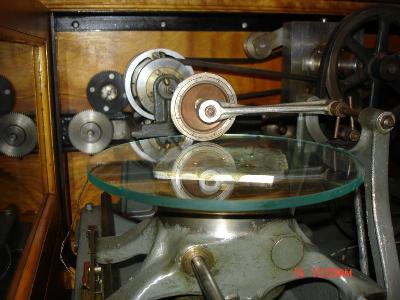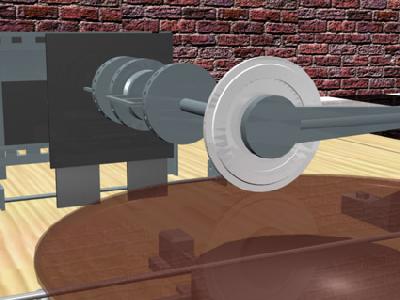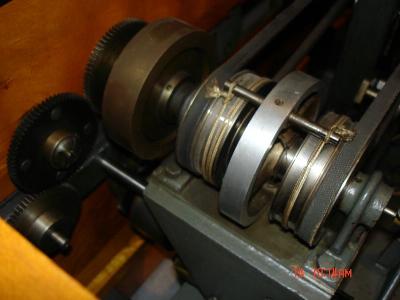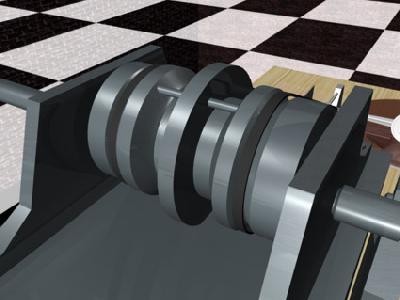[I]t seems rather a pity not to have around such a place as MIT a really impressive Analogue computer; for there is vividness and directness of meaning of the electrical and mechanical processes involved... which can hardly fail, I would think, to have a very considerable educational value. A Digital Electronic computer is bound to be a somewhat abstract affair, in which the actual computational processes are fairly deeply submerged. [2]In the place of an expensive reconstruction of the original high-precision machinery [3], we have completed a virtual reconstruction of the Bush Differential Analyzer. Based on original descriptions and photographs of the computer [4], a graphical model of the computer has been constructed using Maya Complete 6.0, a 3-D modeling software package.
The analyzer is modeled with a physical description of spline curves and meshes of polygons. The scene is illuminated with three sources of light, one directional source and two ambient sources, to enhance the appearance of the components. Texture maps of metal, wood, brick, and floor tiles are used to add detail to the rendered objects.
The complete model is animated to show the operation of the machine solving differential equations. Several days of computer time are needed to produce the individual frames for a single animation. The final video is assembled using Adobe AfterEffects and compressed using the DivX codec.


(LEFT) Original wheel-and-disc integrator from Bush's differential analyzer on display at the MIT Museum. This view shows the glass disc and the metal wheel that implemented integration in the computer. (RIGHT) Animated wheel-and-disc integrator. The animated integrator demonstrates the operation of this clever mechanism, providing insight into the operation of the differential analyzer.


(LEFT) Original Nieman torque amplifier on display at the MIT Museum. This torque amplifier, based on contra-rotating capstans, amplifies the output from the integrator wheel and drives the output gears of the integrator box. (RIGHT) Animated torque amplifier. By watching a short animation of the torque amplifier in operation, students can observe and learn the principles behind the amplifier's operation.


[2] L. Owens, "Vannevar Bush and the differential analyzer: the text and context of an early computer," Technology and Culture, vol. 27, no. 1, pp. 63--95, Jan. 1986.
[3] D.A. Mindell, "MIT Differential Analyzer," [Online].
[4] V. Bush and H. Hazen, "The differential analyzer: a new machine for solving differential equations," Journal of the Franklin Institute, vol. 212, no. 4, pp. 447--488, Oct. 1931.
[5] K. Lundberg and V. Pereverzev, "Virtual differential analyzer reconstruction," IEEE Control Systems Magazine, vol. 25, no. 3, June 2005.